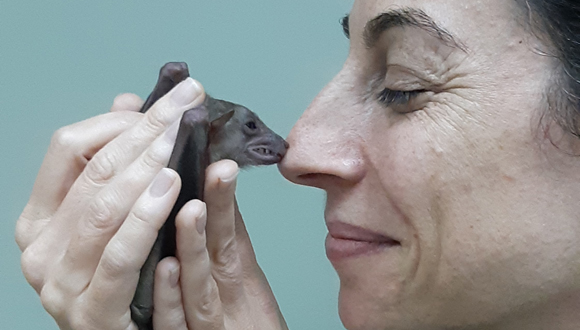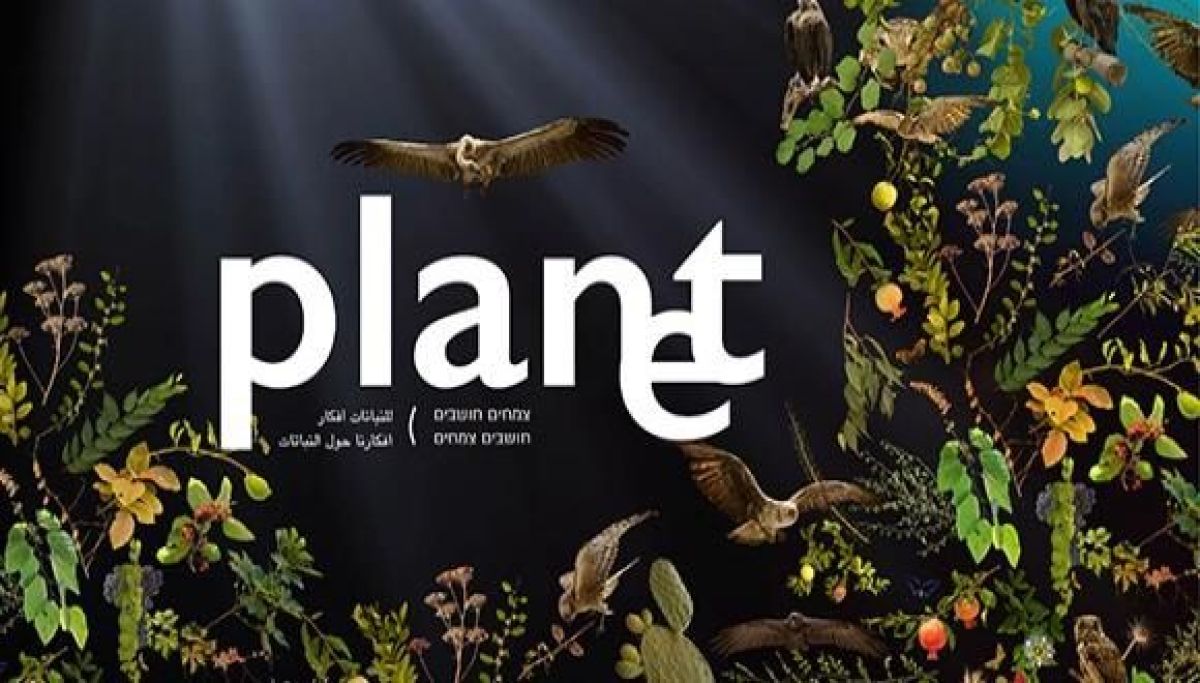Are global preparations for the coronavirus outbreak enough? Is the bad PR bats have been getting justified? And how do you build two brand new hospitals in a few days? Tel Aviv University researchers explain it all.
The usual suspects
Everyone’s looking for someone or something to blame for the outbreak and spread of the deadly coronavirus, and again, as in the Ebola and SARS eruptions years ago, the main suspects are the bats.
Dr. Maya Weinberg of the School of Zoology and a member of the research group of Professor Yossi Yovel, comes to the defense of the winged mammals: “It’s true that there’s a 96% match in the genomes of the coronavirus found in the first patients, to those found in bats. But that’s not enough. First, we like to work with higher match rates, at least 99%. Second, the corona is a multifaceted virus, and I wouldn’t be surprised if today, several weeks since the outbreak, patients are in hospitals with different genetic sequence.”
Could it be that the infection was caused by eating sick bats? “The answer is yes. A sick bat can be contagious. Is it advisable to eat sick animals, whether they are bats or rats or chickens? The answer is no. It’s not advisable to eat any animal before veterinary sanitation,” says Dr. Weinberg.
Although everyone is pointing an accusing finger at bats, they’re not considered an animal that can cause an outbreak. “To be considered an animal that’s spreading disease, two conditions have to be met: the first, that the animal will not die from the virus it carries, and the second – that the virus will replicate in the fluids and organs of the body. This will create viral DNA that can be spread further. Bats don’t meet these two conditions,” she explains. “The bats’ immune system adjusts and constantly “corrects” itself. For example, when they fly at night to look for food, their body temperature rises to 42 degrees (Celsius), which naturally clears their bodies and takes away pathogens. They have the ability to deal with foreign or decomposing DNA, and they also have antiviral proteins that our body expresses only during illness, but are found regularly in the blood of bats.”

One good bat on the tree is better than a sick bat on the plate. (Photo: Jonathan Ben Simon)
The government that built two hospitals within a week
To cope with the growing medical burden, the Chinese government has undertaken a task that seems impossible – setting up two hospitals in a matter of days to provide care to coronavirus patients. The Chinese accomplished the mission within ten very intense days (and nights), with over 10,000 workers working efficiently around the clock. Two new Wuhan hospitals opened, in the region the virus first broke out, and are expected to take in about 1,500 patients each.
Professor Asaf Goldschmidt, from the Department of East Asian Studies, is not surprised. In a recent article, he shows how, a thousand years ago, during the Song Dynasty in the 11th and 12th centuries, the Chinese government addressed the outbreak of plague.
“The Chinese state is organized into bureaucratic organizations, and some deal with public health, medical aid and food distribution. Long before the Westernized bureaucracy, it was already working in China, with the main goal being efficient tax collection. The Chinese already understood what every welfare state advocate says today – to collect taxes, the state has to give something back,” explains Prof. Goldschmidt.
“In China, the Emperor ruled, and some of his status was also derived from the willingness to help the people in times of distress. When events like natural disasters or epidemics happened, the Chinese saw it as a sign that the gods were asking the emperor to improve his behavior, including concern for his people. Even today, the legitimacy of the Communist Party comes partly from concern for the population, “he concludes.

Only in China. From a parking lot to a hospital in 10 days.
From the Far East to the Middle East
Even if you have no plans to visit China, the coronavirus is spreading rapidly and may reach Israel as well. Dr. Bruria Adini is the head of the Department of Emergency Management and Disaster Medicine from the School of Public Health, in which students learn about the various risks facing society in Israel and the world, discuss their implications and contribute through research activities.
“Coping with communicable diseases is a global challenge, and Israel, as part of the international community, is committed to working effectively to address that risk.” Dr. Adini explains. “Appropriate preparation includes formulating protocols and procedures, maintaining equipment inventory, medication and vaccines (if available), and training routinely so that essential steps such as epidemiological investigation, isolation, closure, and medical care can be taken quickly.
The health system in particular, and Israel’s emergency systems in general, have for several decades been dealing with a variety of dangers, including those resulting from the spread of pathogens such as viruses or bacteria (by natural outbreak or as a result of human acts, such as biological terror). When there’s an event that has the potential to impact society in Israel, such as the current coronavirus, defined by the World Health Organization as an emergency event, it’s of course the state’s duty to take precautions and reduce the severity of its impact on society in Israel. To date, most patients are in China, but the possibility of the disease spreading to Israel can’t be excluded.”
Global warming is bad for your health
“It’s important to know that with global warming, more and more new epidemics like the coronavirus and SARS are expected to occur,” Dr. Adini notes. “This is because things like deforestation, expansion of urbanization or agriculture, bring humans closer to nature (animals and plants), which makes them more susceptible to those naturally occurring viruses. For centuries, viruses have survived and evolved in wild animals to not harm the host body, but when they pass from animals to humans, they can quickly cause great damage. The weather can also affect the spread of the virus. For example, the degree of humidity in the air can allow the virus to survive for a longer time (for example, when the person sneezes) compared to drier air, thus actually helping climate conditions to transmit the virus.”

Expanding urbanization processes leads nature into our backyard, which can be dangerous
Is what has been done so far in countries like China to prevent the spread of the virus satisfactory? “One major problem is that in a significant number of countries in the world there’s not a sufficiently well-developed system that can monitor the entire affected population, including early identification of the exposed and infected population. As a result, the total number of carriers and / or patients may be unknown, so all countries have to prepare for a scenario where the scope of the disease is much larger than currently known.
Dealing with an infectious disease, which people contract even before they have obvious symptoms, is a significant challenge, even for large countries. Since the disease doesn’t have a vaccine or drug treatment, it’s important to take steps to contain the event, such as quarantine the affected, isolate patients and restrict movement, to prevent the spread of the virus and minimize its damage. Proper steps are now being taken, but it is unclear whether, at the beginning of the epidemic in China, these actions were taken as quickly as necessary.
Israel is taking precautionary measures, including distributing protective clothing to medical teams and other first responders, creating a policy for isolating patients and people who are suspected of being exposed to the disease. Israel also has a very good ability to provide palliative care to patients.”
Do you think the information currently being distributed about the coronavirus is trustworthy? “It should be based only on reports and guidelines from officials, and take the informal reports with a grain of salt. Fear is a natural state of affairs in these situations, and knowledge reduces anxiety. However, in a state of fear and great uncertainty, social networks are spreading a lot of rumors and “fake news”, which distorts reality and causes tension and anxiety beyond what’s necessary. It’s important to be careful and follow the Ministry of Health’s guidelines for maintaining hygiene and care.”





















 From the “Promised Land”: The gallery walls covered in all the colors of the rainbow. (Photo: Asaf Brenner)
Meet me in the living room
The “living room” created by the Onya Collective is a bright, living space intended for resting, reading and taking in the exhibition. This is a growing space, in all senses of the word, where workshops and discussions will take place, and will continue to change and expand as the exhibition continues.
From the “Promised Land”: The gallery walls covered in all the colors of the rainbow. (Photo: Asaf Brenner)
Meet me in the living room
The “living room” created by the Onya Collective is a bright, living space intended for resting, reading and taking in the exhibition. This is a growing space, in all senses of the word, where workshops and discussions will take place, and will continue to change and expand as the exhibition continues.
 A plant environment that’s also an urban environment
Robots in the field
Artist Liat Segal, known for her sophisticated use of technology, has created huge stems that respond to the changing light in the gallery space. Like plants in nature, their movement follows the light and adapts to how it changes. The stems of the robotic “plants” are coated with carbon fiber, a material that combines both organic and artificial properties.
A plant environment that’s also an urban environment
Robots in the field
Artist Liat Segal, known for her sophisticated use of technology, has created huge stems that respond to the changing light in the gallery space. Like plants in nature, their movement follows the light and adapts to how it changes. The stems of the robotic “plants” are coated with carbon fiber, a material that combines both organic and artificial properties.
 “Tropism” – giant stalks that illustrate the movement of plants. (Photo by Asaf Brenner)
The weeping stones
The final part of the exhibition is the work of the French artist Stephan Teide, “The Weeping Stones”. The giant boulders hanging in the air undermine the laws of gravity, while shedding tears in an arid world, lacking any hint of vegetation. The work presents a “miracle”: the stones seem to produce water by themselves, and the constant dripping produces both a meditative and otherworldly experience.
“Tropism” – giant stalks that illustrate the movement of plants. (Photo by Asaf Brenner)
The weeping stones
The final part of the exhibition is the work of the French artist Stephan Teide, “The Weeping Stones”. The giant boulders hanging in the air undermine the laws of gravity, while shedding tears in an arid world, lacking any hint of vegetation. The work presents a “miracle”: the stones seem to produce water by themselves, and the constant dripping produces both a meditative and otherworldly experience.
 The weeping stones (Photo: Asaf Brenner)
Like nature, the exhibition is expected to change and grow throughout the year, as its living components change, expand, wilt and renew themselves. The exhibition will be open until June 2020, and will include guided tours, lectures and other events open to the public.
The weeping stones (Photo: Asaf Brenner)
Like nature, the exhibition is expected to change and grow throughout the year, as its living components change, expand, wilt and renew themselves. The exhibition will be open until June 2020, and will include guided tours, lectures and other events open to the public.



